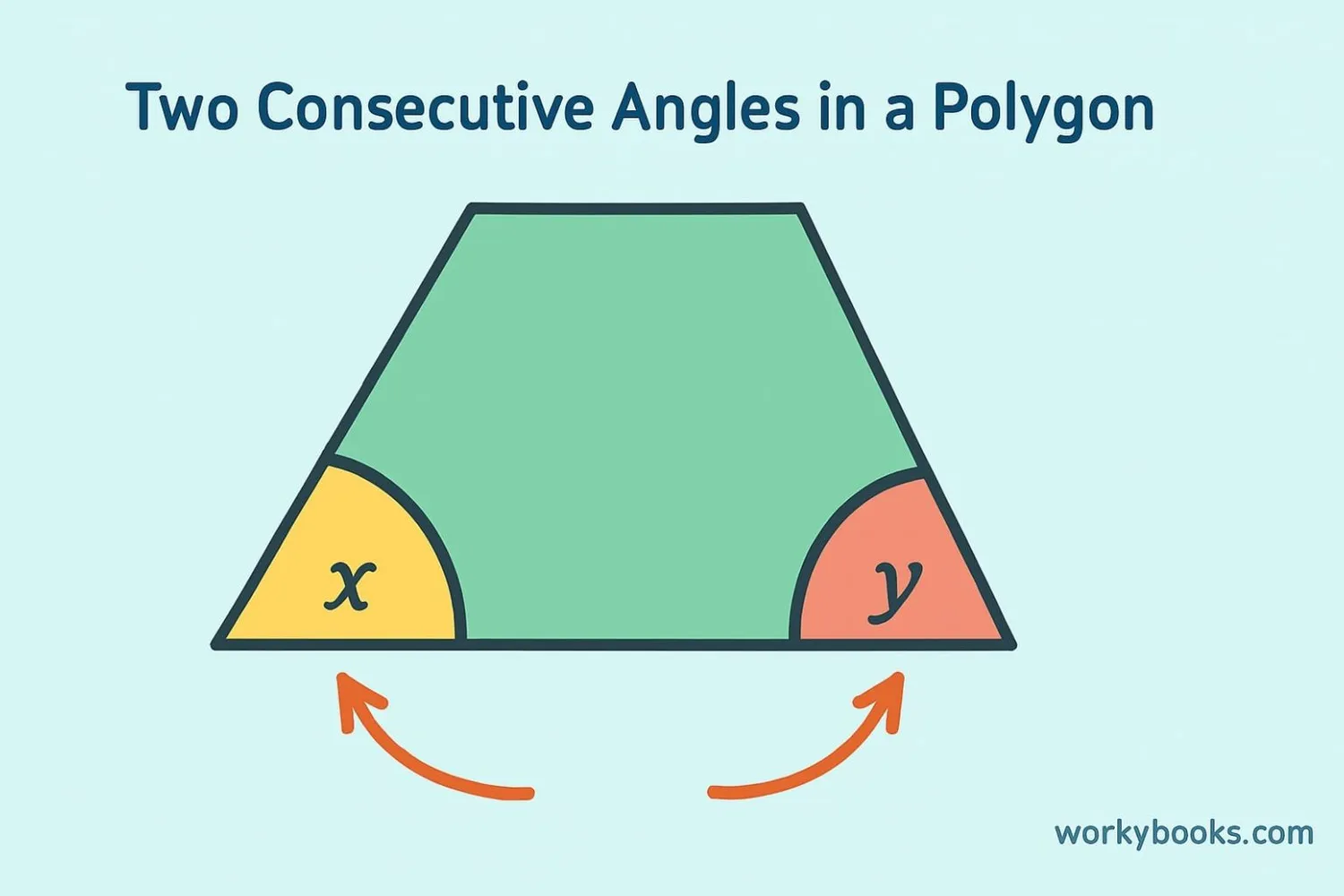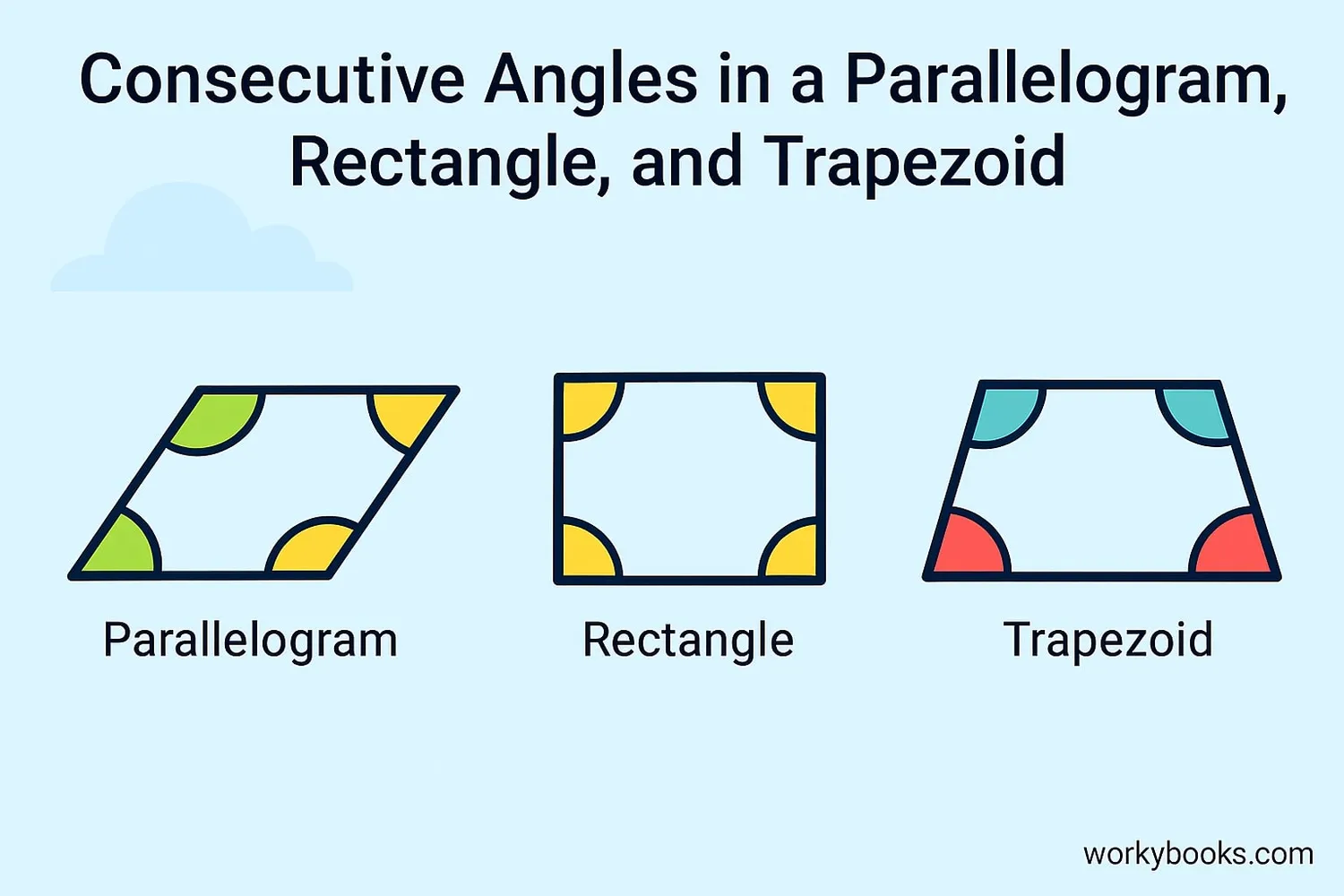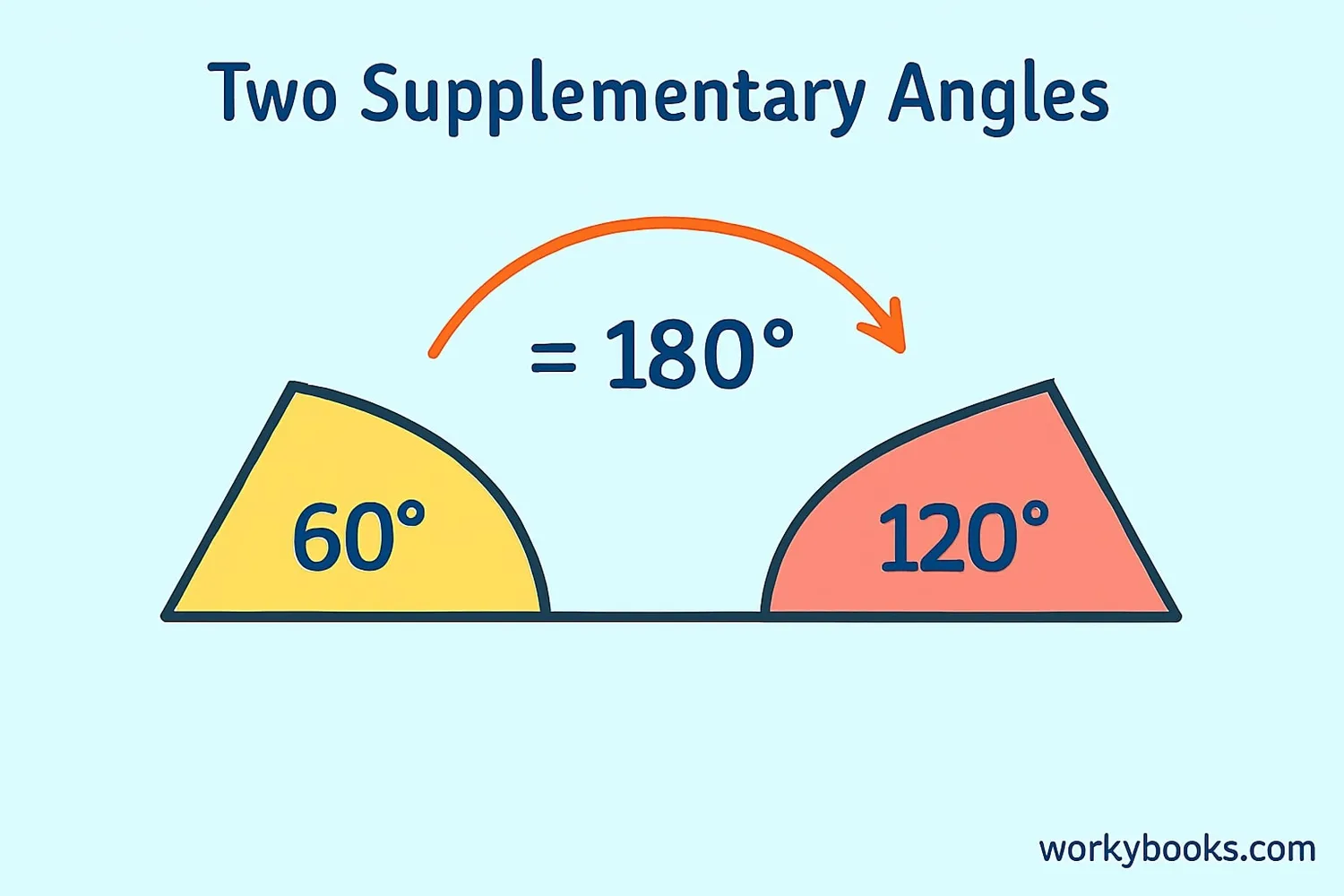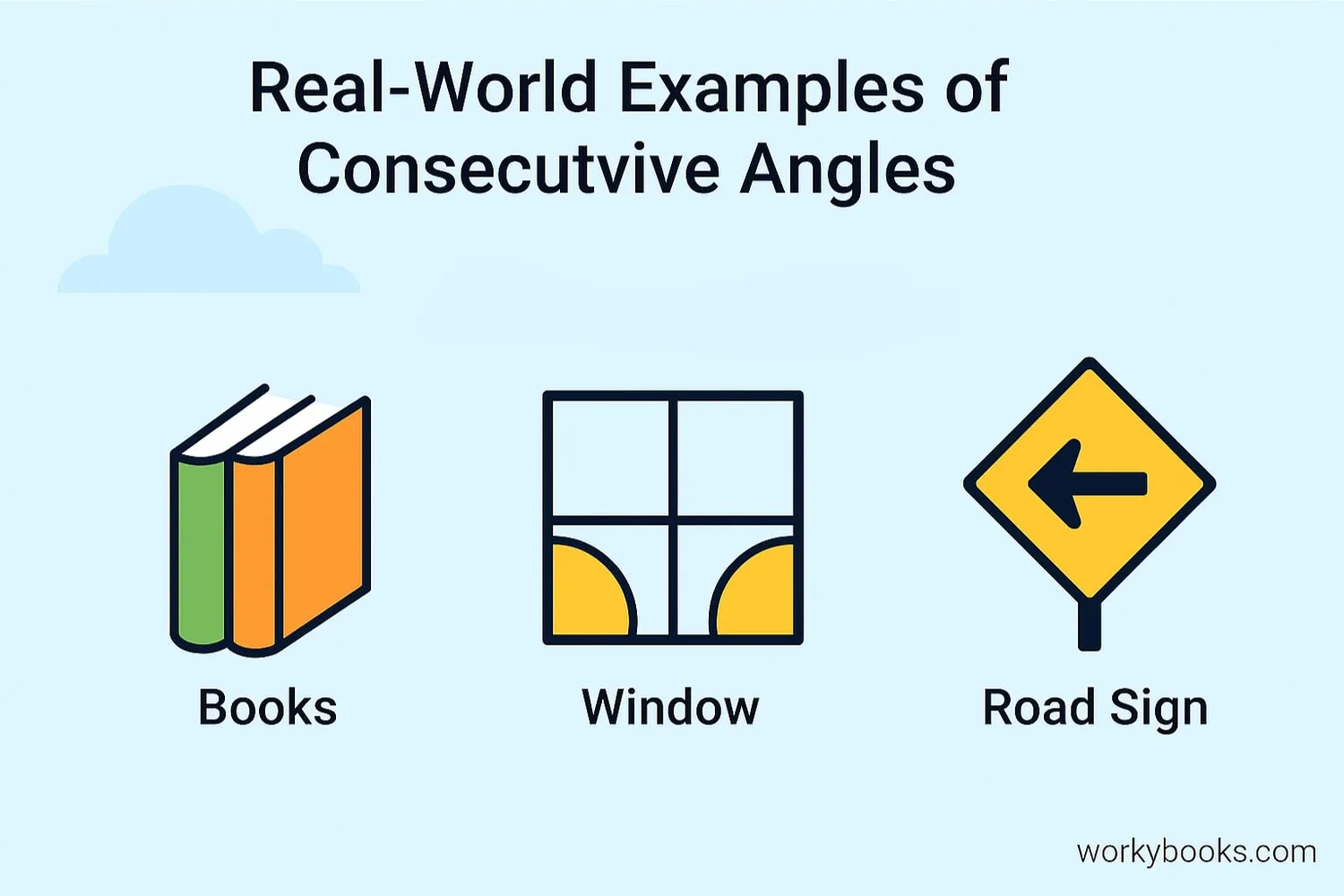Consecutive Angles - Definition, Examples, Quiz, FAQ, Trivia
Learn about consecutive angles with easy explanations, examples, and interactive activities
What are Consecutive Angles?

Consecutive angles are angles that come one after another in a shape. They share a common side and are next to each other. Think of them like neighbors in a polygon!
In any polygon, consecutive angles are:
- Angles that share a common side
- Adjacent to each other (next to each other)
- Positioned one after the other along the shape's boundary
For example, in a quadrilateral (4-sided shape), angles A and B are consecutive if they are next to each other and share a common side.
Understanding consecutive angles helps us solve geometry problems and discover patterns in shapes.
Key Concept
Consecutive angles are adjacent angles that follow one after another in a polygon.
Consecutive Angles in Different Shapes

Consecutive angles have special properties in different shapes. Let's explore:
Parallelogram

- Opposite sides are parallel
- Consecutive angles are supplementary
- Sum of consecutive angles = 180°
- ∠A + ∠B = 180°
- ∠B + ∠C = 180°
Rectangle

- All angles are 90°
- Consecutive angles are supplementary
- 90° + 90° = 180°
- All consecutive angles add to 180°
- Opposite angles are equal
Trapezoid

- Only one pair of parallel sides
- Consecutive angles along non-parallel sides are supplementary
- ∠A + ∠D = 180°
- ∠B + ∠C = 180°
- Angles on same side add to 180°
Remember
In parallelograms and rectangles, all consecutive angles are supplementary. In trapezoids, consecutive angles along non-parallel sides are supplementary.
Properties of Consecutive Angles

The most important property of consecutive angles in certain shapes is that they are supplementary. This means they add up to 180 degrees.
Supplementary Angles Formula
When two consecutive angles are supplementary, their measures add to 180 degrees.
This happens because of parallel lines. When a transversal crosses parallel lines, consecutive interior angles are supplementary. This property carries over to shapes with parallel sides like parallelograms and trapezoids.
Important facts:
- In a parallelogram, consecutive angles always sum to 180°
- In a rectangle, all angles are 90°, so consecutive angles always sum to 180°
- In a trapezoid, consecutive angles between parallel sides sum to 180°
- In a regular polygon, consecutive angles may not be supplementary
Key Property
Consecutive angles are supplementary in parallelograms, rectangles, and trapezoids.
Examples of Consecutive Angles

Let's solve some problems with consecutive angles:
Example 1: In a parallelogram, if one angle is 70°, what is the measure of the consecutive angle?
Solution: Since consecutive angles are supplementary, 180° - 70° = 110°
Example 2: In rectangle ABCD, angle A is 90°. What is angle B?
Solution: All angles in a rectangle are 90°, so angle B = 90°
Example 3: In trapezoid PQRS with parallel sides PQ and RS, if angle P is 110°, what is angle Q?
Solution: Angles on the same side between parallel lines are supplementary. So angle P + angle Q = 180°. 110° + angle Q = 180°, so angle Q = 70°
Example 4: In parallelogram EFGH, angle E is 50° and angle F is consecutive to angle E. What is angle F?
Solution: Consecutive angles are supplementary, so angle F = 180° - 50° = 130°
Practice finding consecutive angles in shapes around you - notebooks, doors, or tabletops!
Problem Tip
Remember that supplementary angles always add to 180°. This is the key to solving consecutive angle problems.
Consecutive Angles Quiz
Test your knowledge with this 5-question quiz. Choose the correct answer for each question.
Frequently Asked Questions
Here are answers to common questions about consecutive angles:
Geometry Trivia
Discover interesting facts about angles and geometry:
Ancient Angle Knowledge
Ancient Egyptians used angles extensively in pyramid construction around 2500 BCE. The Great Pyramid of Giza has angles accurate to within 0.05 degrees!
Nature's Angles
Honeybees build honeycombs with hexagonal cells that have consecutive angles of 120 degrees. This shape uses the least wax to hold the most honey.
Angles in Space
NASA engineers use angle calculations for spacecraft trajectories. A 1-degree angle error when leaving Earth would cause a spacecraft to miss Mars by over 40,000 miles!
Largest Protractor
The world's largest protractor is in Germany, measuring 5.2 meters (17 feet) in diameter. It's used to teach students about angles in a fun, interactive way.


